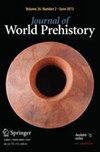青铜器时代欧亚草原战车与社会复杂性
IF 3.1
1区 历史学
Q1 ANTHROPOLOGY
引用次数: 21
摘要
本文旨在研究青铜时代中后期(公元前2050-1750年)欧亚大陆内部马车发展的一些社会原则。分析是基于对马车的考古证据的评估和重新检查,以及它们所带来的社会结构。公元前2000年以前,在复杂但没有国家的社会背景下,战车在欧亚北部草原地区发展起来。由于战车依赖于一套发达的技能、宝贵的资源和复杂的技术,其中涉及到对先前已知解决方案的若干突出改进,因此它们需要特定的条件来发展和维护社会生活。最根本的是,他们需要一群对这种复杂技术感兴趣的人:一群以夸大行为为特征的军事精英。军事精英集体之间对资源、权力和声望的竞争催生了世界上最早的战车综合体。本文章由计算机程序翻译,如有差异,请以英文原文为准。
Eurasian Steppe Chariots and Social Complexity During the Bronze Age
This paper aims to examine some societal principles that underlie the development of horse-drawn chariots in Inner Eurasia during the Middle and Late Bronze Age (cal. 2050–1750 BC). Analysis is based on an evaluation and re-examination of the archaeological evidence for horse-drawn chariots, and the social constructs they entail. Chariots were developed in the zone of the Northern Eurasian steppes before c. 2000 BC in the context of complex but stateless societies. Because chariots depend on a set of developed skills, valuable resources, and complicated technologies, which involve several outstanding improvements to previously known solutions, they require specific conditions for their development and maintenance in social life. Most fundamentally, they require a group of people with an interest in this complex technology: a class of military elites characterized by aggrandizing behavior. The competition between collectives of military elites for resources, power and prestige brought into life the earliest chariot complex in the world.
求助全文
通过发布文献求助,成功后即可免费获取论文全文。
去求助
来源期刊

Journal of World Prehistory
Multiple-
CiteScore
5.30
自引率
0.00%
发文量
8
期刊介绍:
Aims and scopeJournal of World Prehistory is an international forum for the publication of peer-reviewed, original treatments of the prehistory of an area or larger region. It was founded nearly thirty years ago with the remit of providing researchers, instructors and students with timely and authoritative research syntheses from all fields of archaeology. Journal of World Prehistory continues to lead in this field. Our classic articles may be 20,000 or 25,000 words long, as appropriate (excluding their extensive bibliographies). Since 2008 they have been joined by shorter (around 10,000 words), position pieces, which provide in-depth, thoughtful development of data and concepts, including interventions in controversies that unfold in our pages. These, written in a fashion interesting and accessible to all archaeologists, are often paired with a longer treatment in a single volume. In addition, readers now benefit from thematic special issues and double issues, in which a number of leading authors deal with a key theme in world prehistory, such as the origins of metallurgy (2009, volumes 22: 3 and 4), or the East Asian Neolithic (2013, in preparation). All papers are available first online, followed by the print edition. We aim to be truly global in coverage, with recent articles dealing, inter alia, with Amazonian lithics, the late Jomon of Hokkaido, the Bronze Age in Southeast Asia, the Neanderthal settlement of Doggerland, Neolithic networks in Western Asia, younger Dryas Paleo-Indian adaptations, and state formation in the Horn of Africa. Articles benefit from multi-language abstracts where appropriate, and we work closely with authors who do not have English as a first language to present major syntheses in a clear and concise way to an international audience. Traditionally, JWP focuses on earlier periods, but it includes the beginnings and early development of complex societies, and our understanding of ‘prehistory’ is broad and inclusive: for guidance on chronological scope, as well as our calendrical conventions, see the editorial article ‘Prehistory vs. Archaeology: terms of Engagement’ http://www.springerlink.com/content/346142p032604447/ Our unique remit means that we do not encourage the submission of unsolicited papers; rather, specific proposals are encouraged and then guided prior to independent peer review. Our aims and the way we fulfil them, with close contact with authors throughout the publication process, mean that JWP is not a venue for the simple and rapid dissemination of new results. Whilst we expect scholarship to be current, with syntheses including much new data, our readers look to us for definitive area/period coverage that will have continuing value.If you are proposing an article or special theme for Journal of World Prehistory, please read the Instructions for authors.Rated ''A'' in the European Reference Index for the Humanities (ERIH)?Journal of World Prehistory is rated ''A'' in the ERIH, a new reference index that aims to help evenly access the scientific quality of Humanities research output. For more information visit http://www.esf.org/research-areas/humanities/activities/research-infrastructures.htmlRated ''A'' in the Australian Research Council Humanities and Creative Arts Journal List. For more information, visit: http://www.arc.gov.au/era/journal_list_dev.htm
 求助内容:
求助内容: 应助结果提醒方式:
应助结果提醒方式:


